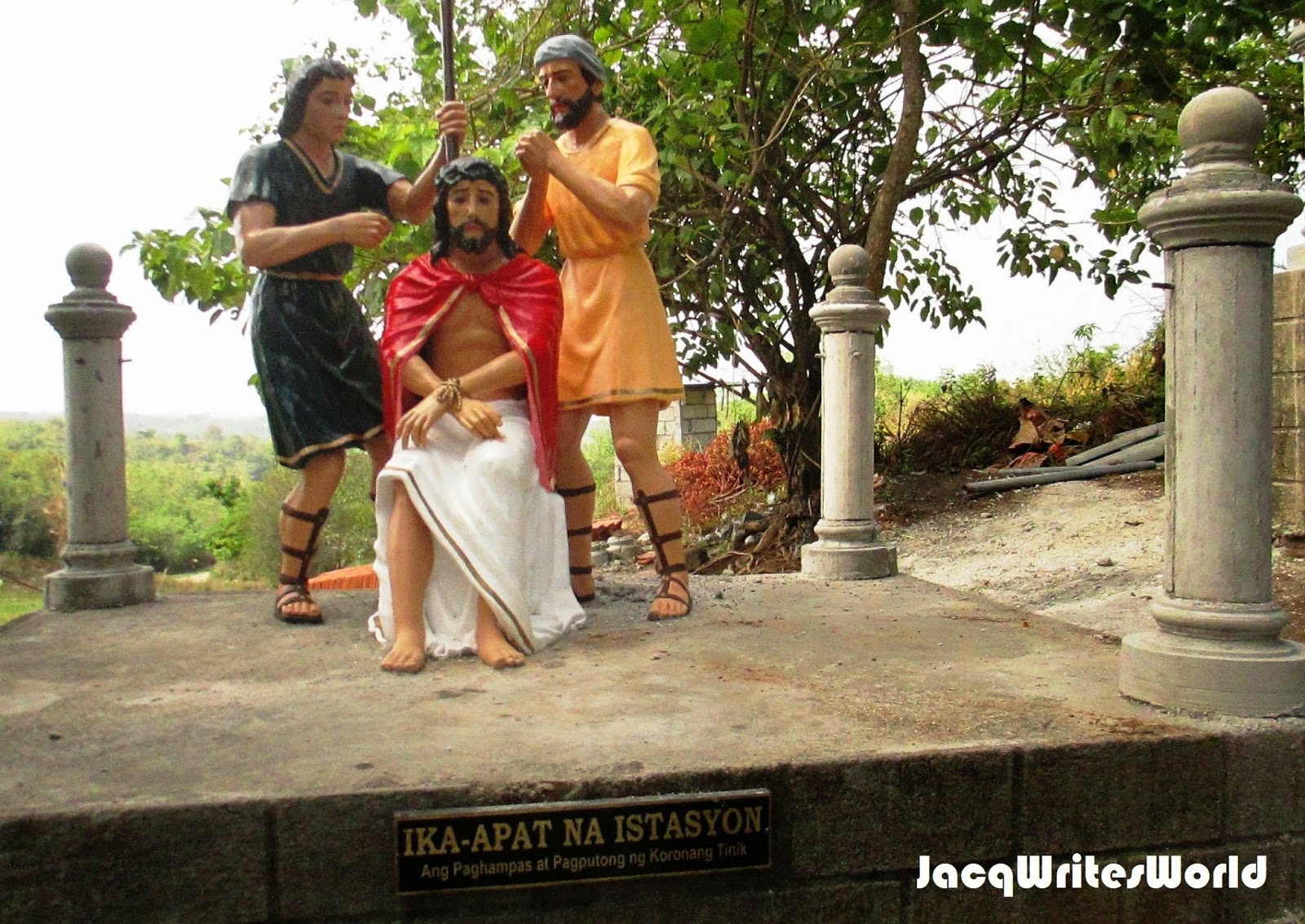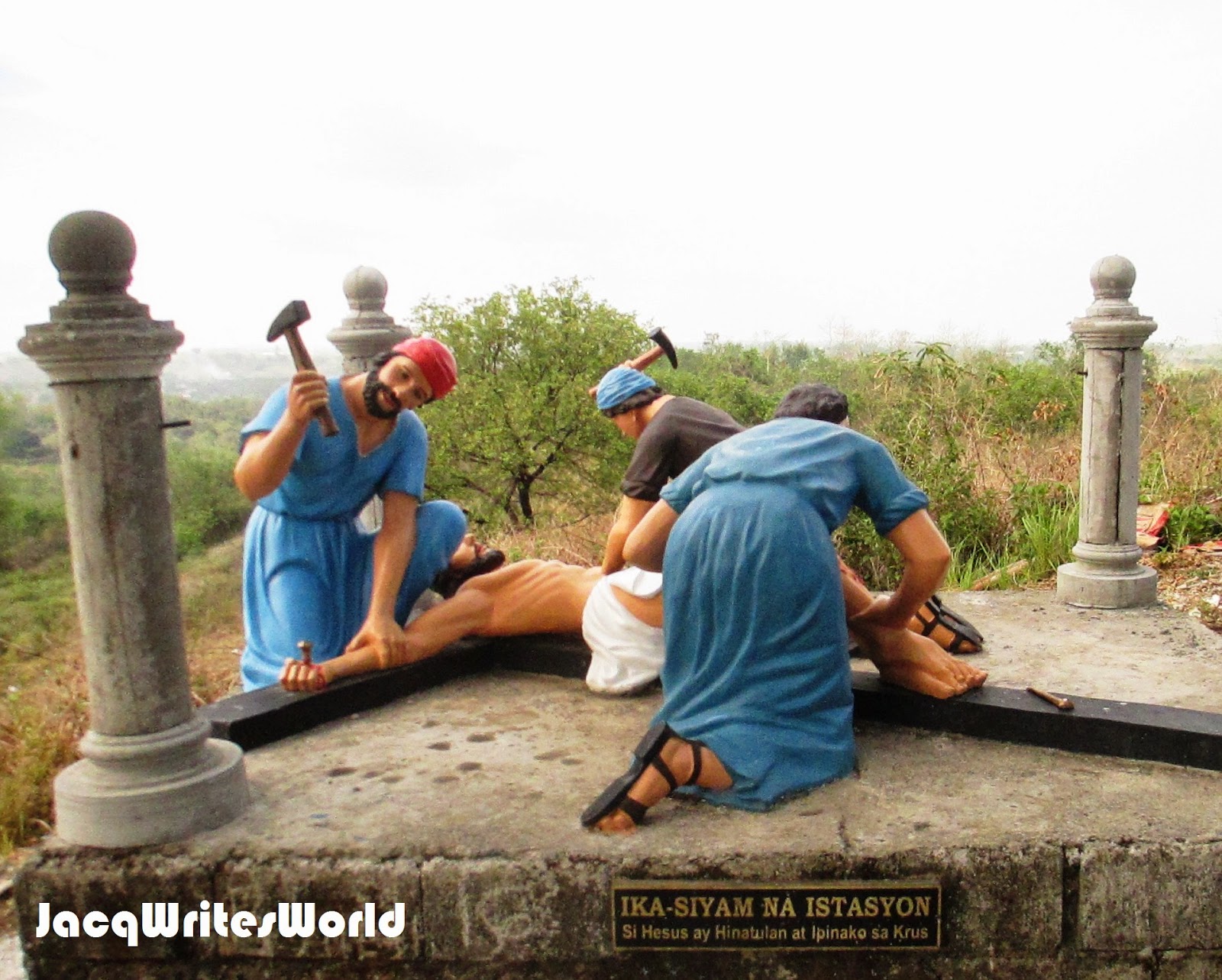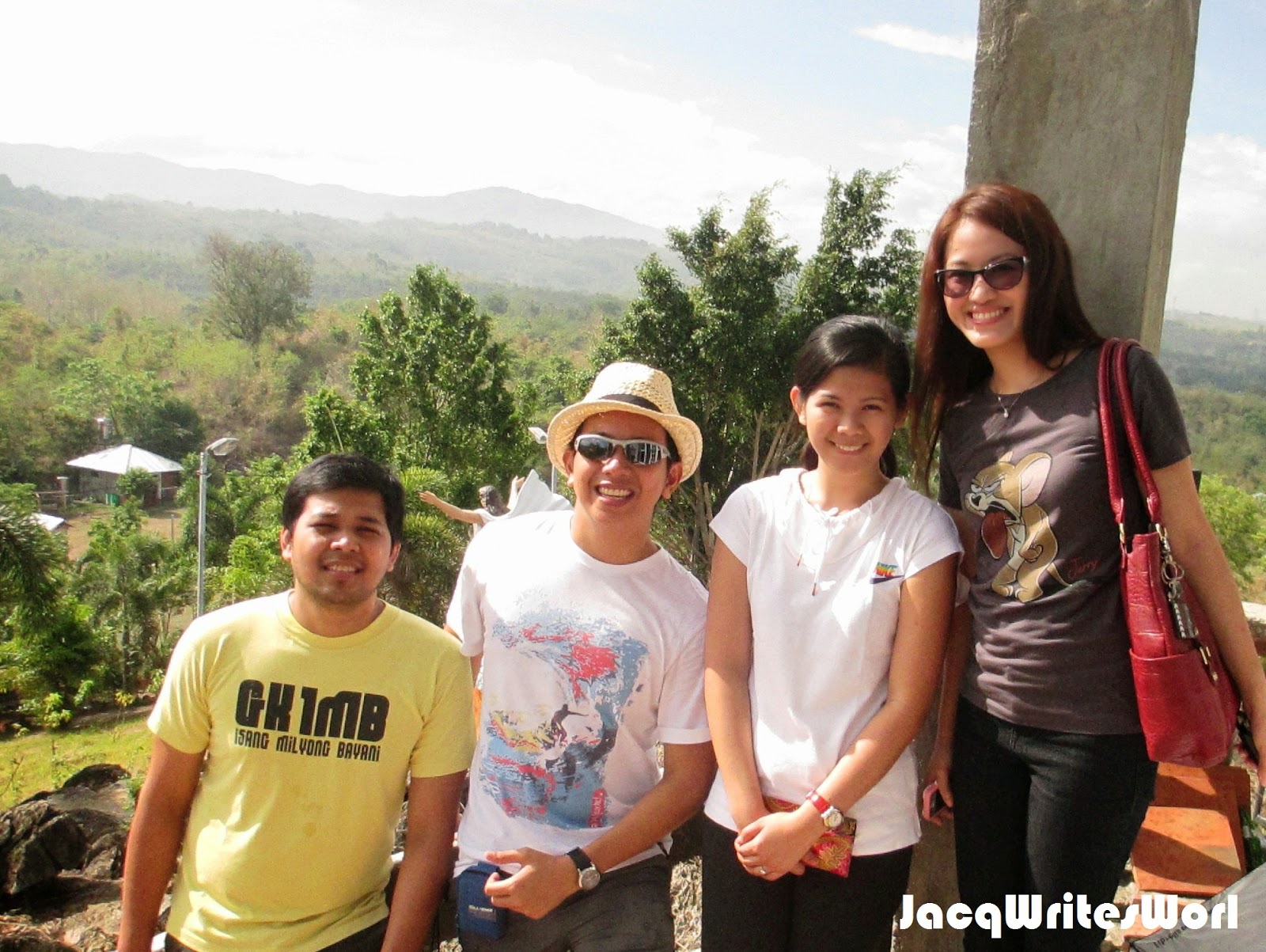San Miguel, Bulacan: Off-beaten Path Encounters with Angels and Heroes
By Eric
Paraguya
(This one’s
another post from my hubby Eric. Since his first post was warmly received, even
by Our Awesome Planet (my gosh!) (check out his travelogue of Mount Pulag here), I coaxed him to write this one and just about
every other travel we would have. We hope these will better inform you, my dear
readers, on your next planned weekend trip. Enjoy! xoxo)
The quiet town of San Miguel, Bulacan is fabled to be protected
over by Saint Michael, Heaven’s chief archangel. This act of bravery must have likewise
inspired the folks of yesteryears to take up arms against Spanish oppressors. I
happened to encounter both angels and heroes myself during my latest scenic roadtrip
to San Miguel, Bulacan.
Saint Michael's statue in Banal na Bundok, San Miguel, Bulacan
San Miguel might not be the most famous town in Bulacan for
tourists, but a number of attractions are set to place this town on the map
especially for religious excursions and history field trips.
I came to visit San Miguel after an invitation to spend a
weekender by my brother’s fiancé, Jonalyn, who hails from this town. San Miguel
is geographically the last town in Bulacan from Manila. We hopped on the
Baliwag aircon bus from Cubao and travelled approximately 2 hours to reach the
town (Fare: Php 131, one way).
I was keen to observe the changing linguistic pattern of my
co-passengers the farther we travel from Manila. Teka, nagiging mas malalim yata ang Tagalog as we travelled from a
saint-named town to another. I finally tested my hypothesis right when the bus
conductor glibly answered me back in Tagalog with the words “naintindihan”
changed to “naunawaan” and “malaki ang San Miguel” to “maluwag ang San Miguel”.
These phrases may be synonymous, but the latter are less often used in city
colloquial speech. A pleasant epiphany of our country’s linguistic variety, if
you ask me.
Sprawling with vast rice fields, farming is actually the town’s
primary source of livelihood. It also happened that we stayed in Jonalyn’s
house situated in the middle of the rice field, seemingly an “island” propped
in the midst of their family’s farm land. Living in one of the country’s
largest rice plantations has its benefits indeed, and we were blessed to enjoy
freshly harvested rice in all of our meals there. Yum! Truly, this is the
perfect place to binge on unli rice. Unli
rice pa! Kanin pa lang, ulam na! Even
my wife loved how they cooked rice there, one of the best she’s had she quipped.
Jonalyn calls it “malata” while my wife calls it “sticky rice”.
Banal na
Bundok: A Novel Pilgrim Site
Probably one of the town’s newest tourist attraction, Banal
na Bundok lives up to the challenge of creating a site that will cater to the
needs of Catholic pilgrims, a promising “one-stop-shop” for the various
Catholic devotions. It actually incited the Catholic traveller in me and
allowed me to become quite reflective.
The ascending stairs in the Station of the Cross
"Christ forgives."
Aerial view of the Stations of the Cross, Banal na Bundok
Capitalizing on the town’s namesake and patron saint, the
small facility uniquely features a statue
gallery of the Seven Archangels. It
was informative for me to know the names of the Archangels and the venerations
for each one. Each statue of an angel features a prayer written in Filipino
which one can recite while venerating on the picturesque figure.
The Gallery of Archangels; St. Michael's statue
is housed in the small edifice at the top.
San Miguel Arkanghel, watch over us.
"San Uriel, Hustisya mayor sa langit kaya't ang taglay ay timbangan at espada"
"San Gabriel, Kalihim pangkalahatan pinagkakatiwalaan ng Diyos ng mga lihim na
gawa, taglay niya ay pluma"
"San Judiel, Tagapagbiyaya at tagapagkaloob ng awa ng Poong Diyos kaya
ang kanyang taglay ay balutan ng mga bulaklak"
"San Sealtiel, tagapaghain at tagapanalangin sa Diyos
ng anumang magaling na gawa natin. Ang kanyang taglay
ay incensaryo"
"San Baraquiel, tagapag-alaga sa langit at lupa.
Siya ay taga-tulong at taga-ampon sa lahat ng kampon ng Diyos
kaya siya ay may dalang bata"
"San Rafael, Mayordomo ng buong Diyos
kaya ang kanyang taglay ay isda at tinapay"
Here, you can also find life-size statues of the New Stations of the Cross. From the
replica of the first station – the Last Supper, the journey takes you uphill to
Christ’s resurrection, the last station’s replica. This spot, I heard, is reputedly
gaining popularity among Catholic pilgrims which flock the site especially during
the Holy Week.
Some snapshots of the Stations of the Cross as follows.
 |
| The Last Supper |
 |
| Agony in the garden |
 |
| Jesus was sentenced to death |
 |
| Scourging at the Pillar and Crowning with Thorns... |
 |
| Jesus carries His cross |
 |
| Jesus falls for the first time |
 |
| Jesus was helped by Simon of Cyrene |
 |
| Jesus meets the women of Jerusalem |
 |
| The Crucifixion of Christ |
 |
| Jesus with the repentant thief |
 |
| Jesus dies on the cross |
 |
| Jesus was laid in the tomb |
 |
| The Resurrection of Jesus Christ |
Standing at the top of the hill is the Basilica of the Black
Nazarene, a shrine which houses a statue of the suffering Christ carrying the
cross. Several feet away is a shrine dedicated to the Divine Mercy. Another
shrine several feet further, one can venerate Christ in the Sepulchre.
Chapel of the Black Nazarene
Chapel of the Divine Mercy
At the Banal na Bundok’s foreground is situated a walled
large grotto for the different Marian devotions. A statue of Mama Mary was
placed for each devotion, with each likewise featuring a prayer written in
Filipino.
At the Marian grottoes.
"Alaala sa Mahal na Birhen ng Guadalupe"
"Birhen ng Fatima"
"Maria, Mediatrix of All Grace"
"Birhen ng Rosario La Naval"
Cashew
harvesting in Banal na Bundok
Several amenities are likewise mushrooming in this reluctant
tourist complex – a refreshment area, a mini zoo, nipa stalls selling souvenirs,
and a nearby grassland for tending sheep. Some of the structures are still
undergoing construction which is a testament to this complex’s growing
popularity.
Exotic paperweights as souvenirs sold here.
Some of the items sold here.
We happened to meet some animal friends here, like these sheep.
And lonesome donkey...
Trees of cashew also line the path to the mini zoo. It was 9
am on a Sunday and our group of 5 were the only ones in the area. Lucky for us,
the staff permitted us to harvest the cashew fruits to satiate our curiosity
for the source of the trailmix favourite. Otherwise at other times, cashew
harvesting was prohibited in this area.
Cashew harvesting proved to be absolutely fun especially for
the girls in our group. All along, I thought one can snatch the nut attaché
from the fruit and munch it thereafter. Good thing, I was corrected before I
tried that – the nut needs to be boiled first to be edible. Otherwise it would taste
sappy. I tried to eat the ochre cashew fruit as well but I stopped at first
bite. It is characteristically madagta but
it oozes with sweet juice. I initially wondered why the cashew fruit is not
popularly sold in fruit stands, after I tasted it I understood why.
My first encounter with the cashew tree.
With cashew fruits ripe for the picking.
Jerry accurately captures my mouth’s reaction to the cashew
fruit at first taste.
Several cashew trees down the path, we were reminded that our
harvesting was in fact prohibited. So travellers, sungkit at your own risk. Or better yet, ask for permission. We
did!
Biak-na-Bato:
A split-rock glimpse of Philippine History
My wife told me she frequented Biak-na-Bato nature park
during her grade school years when they used to visit here for field trips. For
someone who was educated in the province, my only encounter with “Biak-na-Bato”
was when I read it in my history textbook. My recollection even failed me when
I confidently insisted, during our group’s convo in the car, that this is where
Andres Bonifacio established the first Philippine republic! Haha!
The mountain at the nature park that must have inspired the monicker, "Biak-na-Bato"
Aguinaldo's monument.
Well, we realized we needed to brush on our history books
again. When we reached Biak-na-bato
nature park, I later learned this was Emilio Aguinaldo’s hideout after he
escaped Spanish captivity.
The nature park is a huge 2,117 hectares of land, consisting
of a cave network as well as river and trail systems with ecologic and historic
significance. Most pertinent of the latter is Emilio Aguinaldo’s headquarters
in one of the caves here, which is now named the Aguinaldo cave.
At the entrance of the National Park.
Since time did not permit it, we were able to visit the
entrance part of the park which consisted of the hanging bridge and the
pavilion. Entrance fee to the park is Php 30 for adults, and I was informed one
needs to pay for the tour guide if you avail the service of one. And if you
plan to take a hike in the nature park, you must allow at least 4 hours to
comfortably do this activity.
 |
| The hanging bridge, sturdy as it is supported by metal cables. |
The river below the hanging bridge where locals splash to beat the heat.
 |
| Photo op with the gang. |
Some of the must-take-home pasalubong are the pastillas de leche (the toasted variety is heavenly!), and taro chips.
 |
| Jacq's favorite chips! |
After the sight-seeing from the two places, we drove 30
minutes to Rustica restaurant located in the nearby city of Gapan, Nueva Ecija.
By this time, we were already famished from the touring we did that morning, so
we looked forward to have lunch. We needed to visit Rustica as well to have an
ocular survey since my brother and his fiancé plan their wedding reception
here. My thoughts: the venue can hold an elegant party and their kare-kare is divine. ‘Nuff said. (More
reviews on Rustica, Gapan City in the future.)
“There was a time”, our tourist guide relates, “when you say
that if you are from San Miguel, Bulacan, you must be a heavy beer drinker”.
After a scenic trip to this town, I beg to differ.
While they can drink away every beer to their heart’s content, I hope people will someday remember San Miguel more as a town teeming with promising attractions. Because I can truthfully say, there is indeed more to that that this town, where angels and heroes tread, can offer.
While they can drink away every beer to their heart’s content, I hope people will someday remember San Miguel more as a town teeming with promising attractions. Because I can truthfully say, there is indeed more to that that this town, where angels and heroes tread, can offer.
------------------------------------------------------------------------
Some Useful Info
Budget:
Fare Key Figures
PhP 131 – one way, aircon bus fare from Cubao to San Miguel,
Bulacan
PhP 1,000 to 1,500 – estimate of jeepney-for-hire taking you
from the town center to Banal na Bundok and Biak-na-Bato; a jeepney fits a
comfortable 18 passengers
PhP 500 – estimate gasoline consumption from town center to
the above tourist spots and back
What to bring for a summer visit:
·
Wide brim hat
·
Sunnies
·
Water
·
Trailmix
·
Extra shirt
Tips:
·
Visit the Banal na Bundok early morning or late
afternoon. It is too warm during midday with little amenities for cooling down,
especially during the summer. In terms of evening visits, lighting facilities
are reportedly present in the complex although I haven’t witnessed the night
scene myself.
·
If you are in for the hike, better plan the whole
morning and afternoon for the Biak-na-Bato nature park and trail. The park is
too vast (to the tune of 2,000 plus hectares) to be covered in one day.
Cheers!
Eric
---
Looking for more places to go to? Check out this Antipolo travelogue post from my sister blog, The Catholic Chic. Happy travels! <3
---
Looking for more places to go to? Check out this Antipolo travelogue post from my sister blog, The Catholic Chic. Happy travels! <3











































Interesting read. I'll have to bookmark this and check if we can visit anytime soon. It seems best to visit San Miguel during the Holy Week though. :)
ReplyDeleteTrue! I hope we get to do a road trip soon kasi I don't wanna go without doing another trip with you! :) game na planuhin na yan!
DeleteThanks Beryl. Yes I agree, it is ideal to visit it during the Holy Week. A welcome alternative to Quezon's Kamay ni Hesus. :)
ReplyDelete